Blog >
Supply Chain
Over 77% of Auto Suppliers Demand Real-Time Visibility Notifications Amidst Disruption
The Tradeverifyd Team
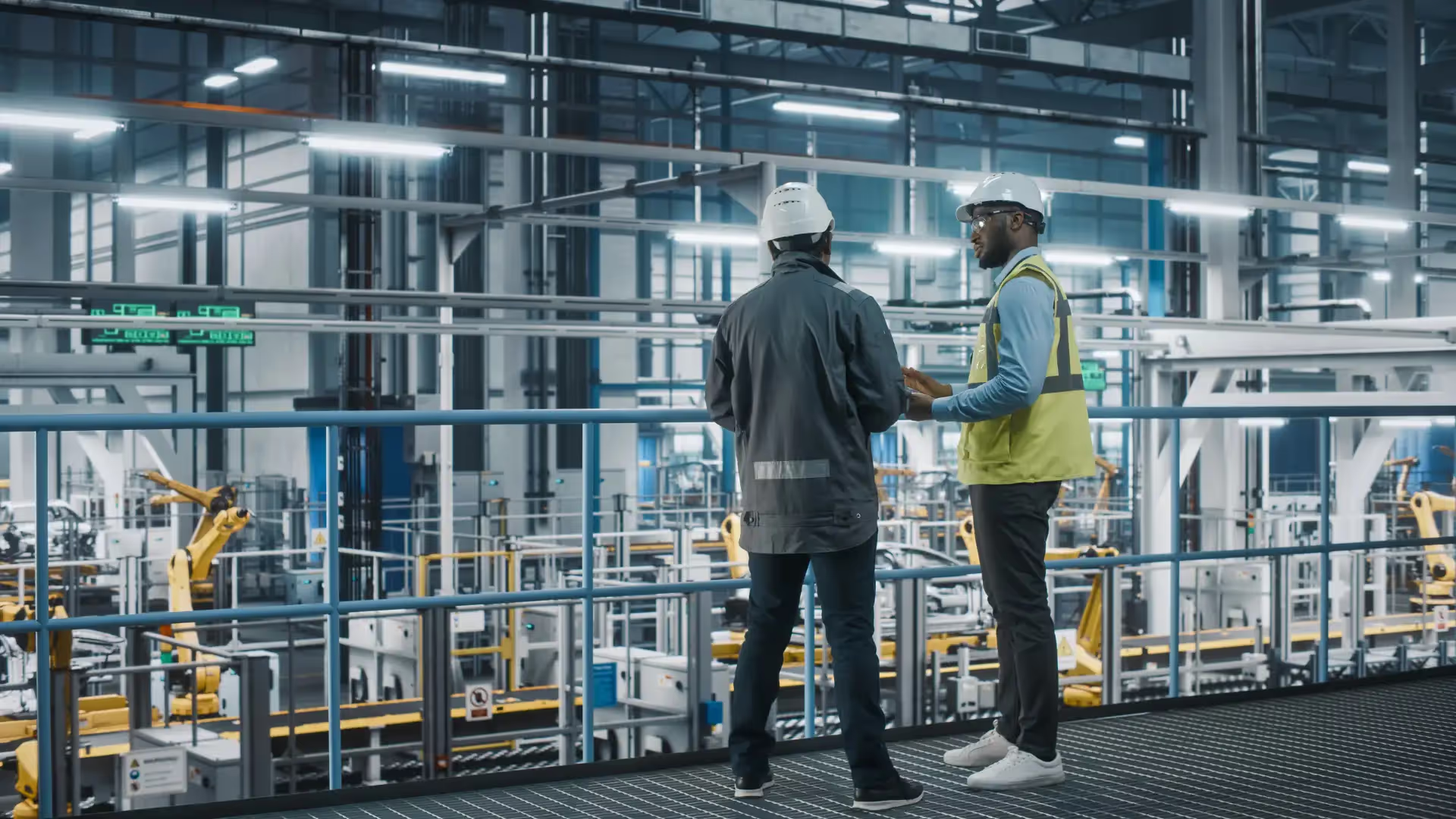
Despite signs of improving automotive demand, suppliers continue to face significant delivery challenges, with almost 80% of organizations encountering at least one supply chain disruption in the past year alone. From geopolitical tensions and raw material volatility to skilled labor shortages and rising logistics costs, suppliers are navigating a variety of ongoing challenges.
How are automotive suppliers responding to these pressures? Tradeverifyd surveyed 322 automotive supply chain professionals to find out. Our findings reveal an industry reacting to immediate pain points while actively investing in a more visible, predictable, and resilient future.
Key Takeaways
- 77% of automotive suppliers say real-time supply chain notifications are extremely or very important, underscoring demand for immediate, actionable information.
- Nearly 60% face significant challenges in the automotive supply chain and logistics management, particularly from rising transportation costs.
- 71% of automotive suppliers are increasing investment in supply chain resilience.
- 63% say the “ability to model supply chain impact” is the most impactful technology for building resilience.
60% of Auto Suppliers Suffer From Rising Logistics Costs
The automotive supply chain is grappling with widespread and costly disruptions. Our survey reveals that nearly 60% of automotive suppliers face significant negative impacts from rising logistics and transportation costs, alongside a common shortage of skilled labor.
Raw material price volatility and shortages also stand out as major concerns, impacting nearly half of respondents. This dual pressure creates a squeeze on operational efficiency and financial margins, directly influencing vehicle availability and cost for consumers worldwide.
Suppliers are actively responding with strategic pivots, signaling an urgent need for new approaches, including:
- Re-evaluating sourcing locations
- Exploring near-shoring or friend-shoring initiatives
- Investing in automation to offset labor gaps
However, effectively addressing these critical ongoing risks — such as the escalating logistics costs, persistent skilled labor shortages, and unpredictable raw material prices — is hampered by a fundamental issue: a lack of quality data and end-to-end visibility. This deficiency prevents proactive risk management, forcing suppliers into reactive measures that often lead to missed opportunities and costly delays.
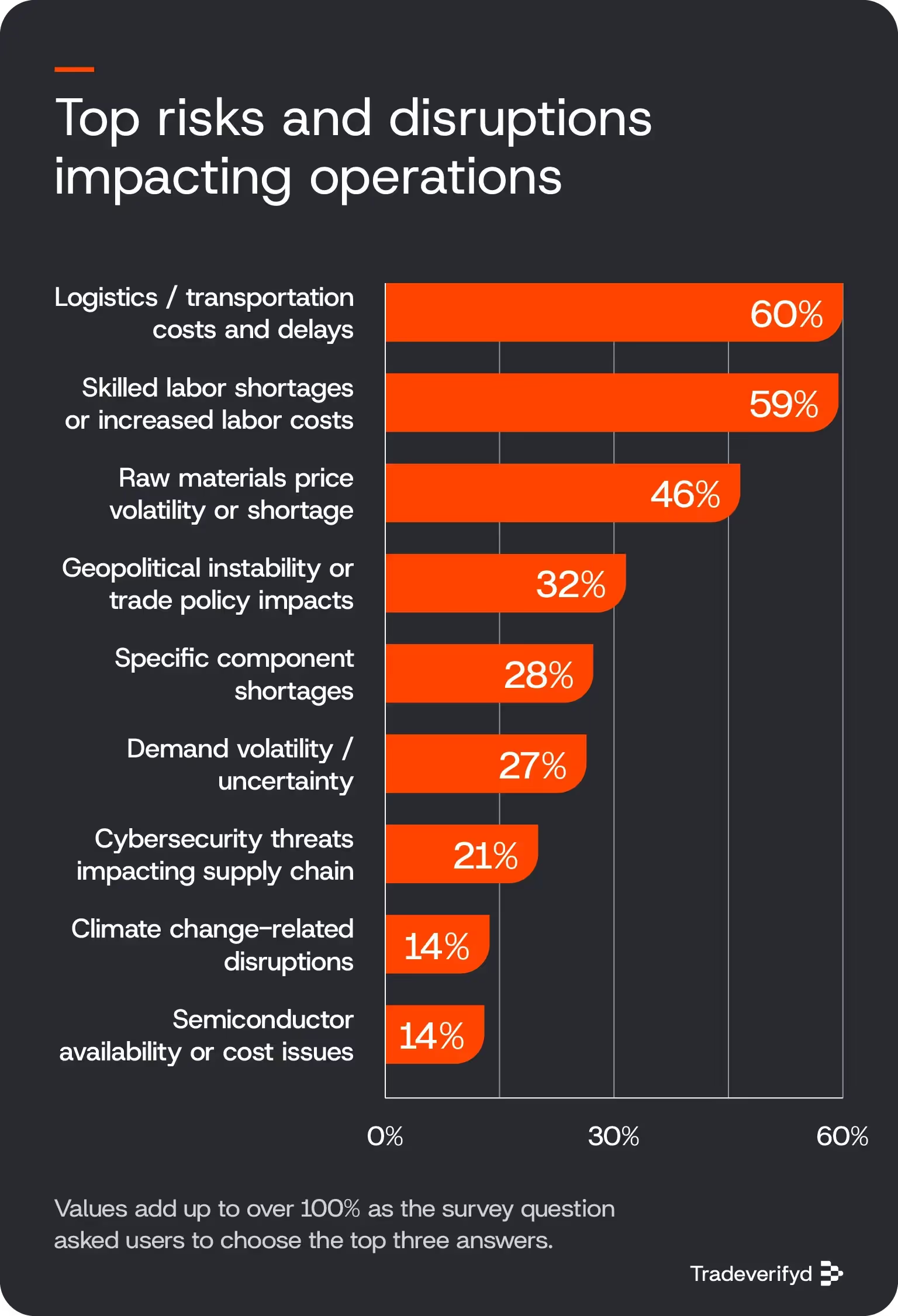
What's particularly concerning is how these pressures are affecting competitive positioning. Suppliers struggling with rising costs and inefficiencies may find themselves at a disadvantage, risking market share to more agile competitors.
More Than 3 in 4 Suppliers Prioritize Real-Time Supply Chain Data
The automotive industry isn't just reacting to unprecedented global disruptions; it's making a strategic bet on the future. Our survey reveals a powerful shift: 71% of automotive suppliers are actively increasing their commitment to supply chain resilience strategies. This signals a collective understanding that robust, adaptable supply chains are essential for survival and growth.
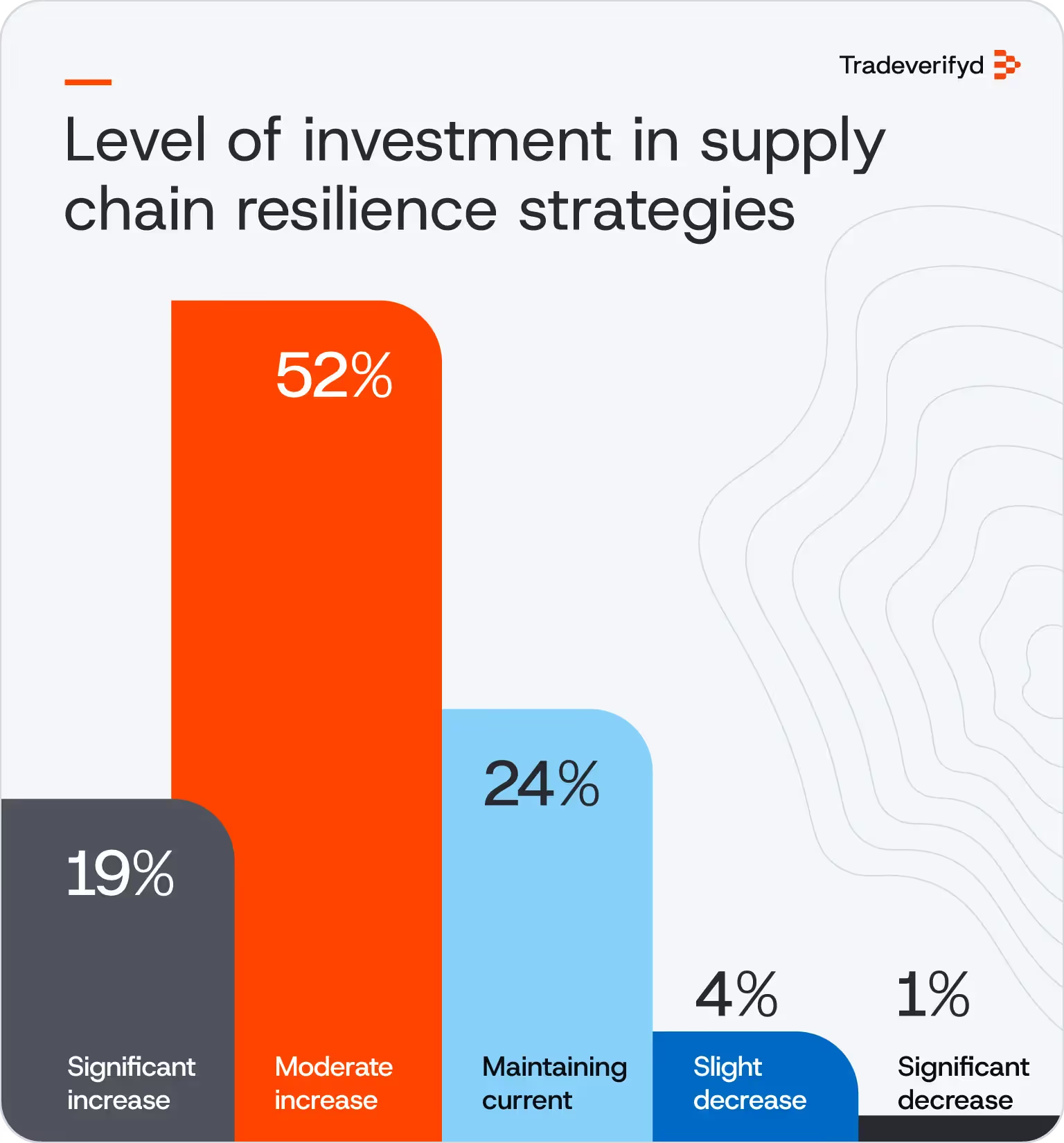
This proactive stance becomes even clearer in the overwhelming demand for immediate, actionable information. More than 77% of respondents deem real-time notifications of relevant events “extremely” (38%) or “very” (40%) important. This strong consensus underscores that for these companies, having clear, real-time information about their supply chain operations has become mission-critical.
“The demand for real-time supply chain alerts comes down to one thing: decision-making. You can’t manage what you can’t see, and slow information leads to slow reactions. The companies that succeed will be the ones that close the gap between risk signals and action across their global operations.”
— Mike Prorock, Founder & CEO of Tradeverifyd
Despite Investment, Key Barriers Hinder Auto Supply Chain Resilience
Despite massive investment in resilience strategies, automotive suppliers face significant, often fundamental, execution hurdles that threaten to undermine their best efforts. Survey respondents identified a “lack of standardized processes or platforms across partners” as the most significant barrier to achieving true supply chain resilience.
This finding highlights a critical truth: Even with increased investment, the inability to speak the same "data language" or operate on compatible systems creates friction, delays, and blind spots.
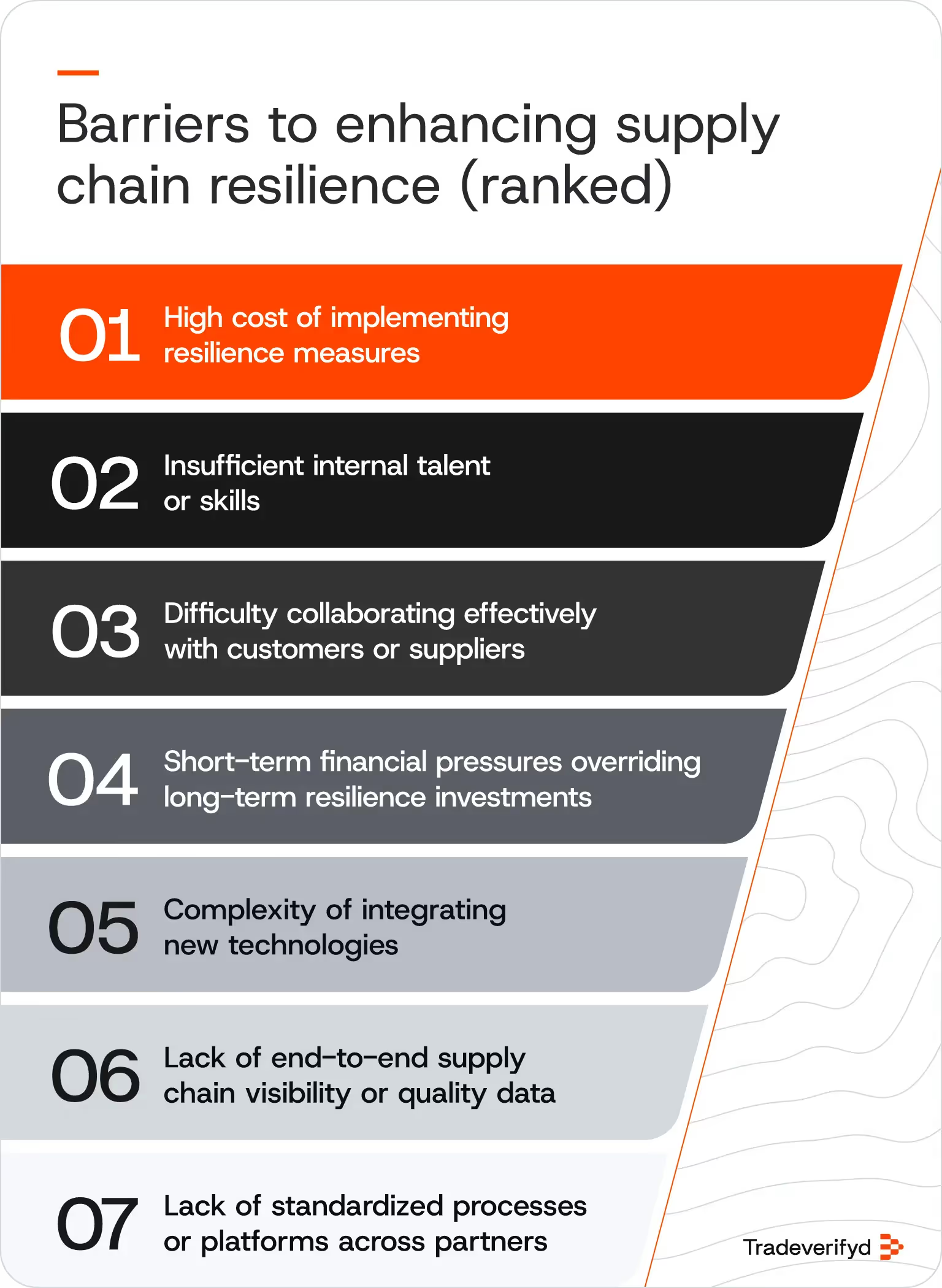
It's like trying to conduct an orchestra when each musician reads from a different score, possibly leading to a lack of good data and a full, end-to-end view of their supply chain. Simply put, companies can't fix what they can't see, and this data deficiency becomes a major roadblock to resilience efforts.
Many suppliers adopt new digital tools primarily for:
- Improving operational efficiency (59%)
- Reducing costs (54%)
- Gaining competitive advantage (50%)
These standardization issues often prevent them from achieving their full potential for resilience. Without a unified approach to data exchange and operational protocols, efforts to enhance visibility and responsiveness constantly hit obstacles, leaving supply chains vulnerable to the very disruptions they're trying to prevent.
63% Prioritize Impact Modeling: Auto's Future-Proofing Tech
Looking ahead, automotive suppliers are eager for sophisticated technological solutions that transform supply chain risk management in the automotive industry from reactive crisis response to proactive mitigation.
A significant 63% of suppliers believe the “ability to model supply chain impact” will be the most transformative technology for enhancing resilience over the next three to five years. This shift allows them to move from simply reacting to disruptions to proactively preventing costly shutdowns and optimizing operations.
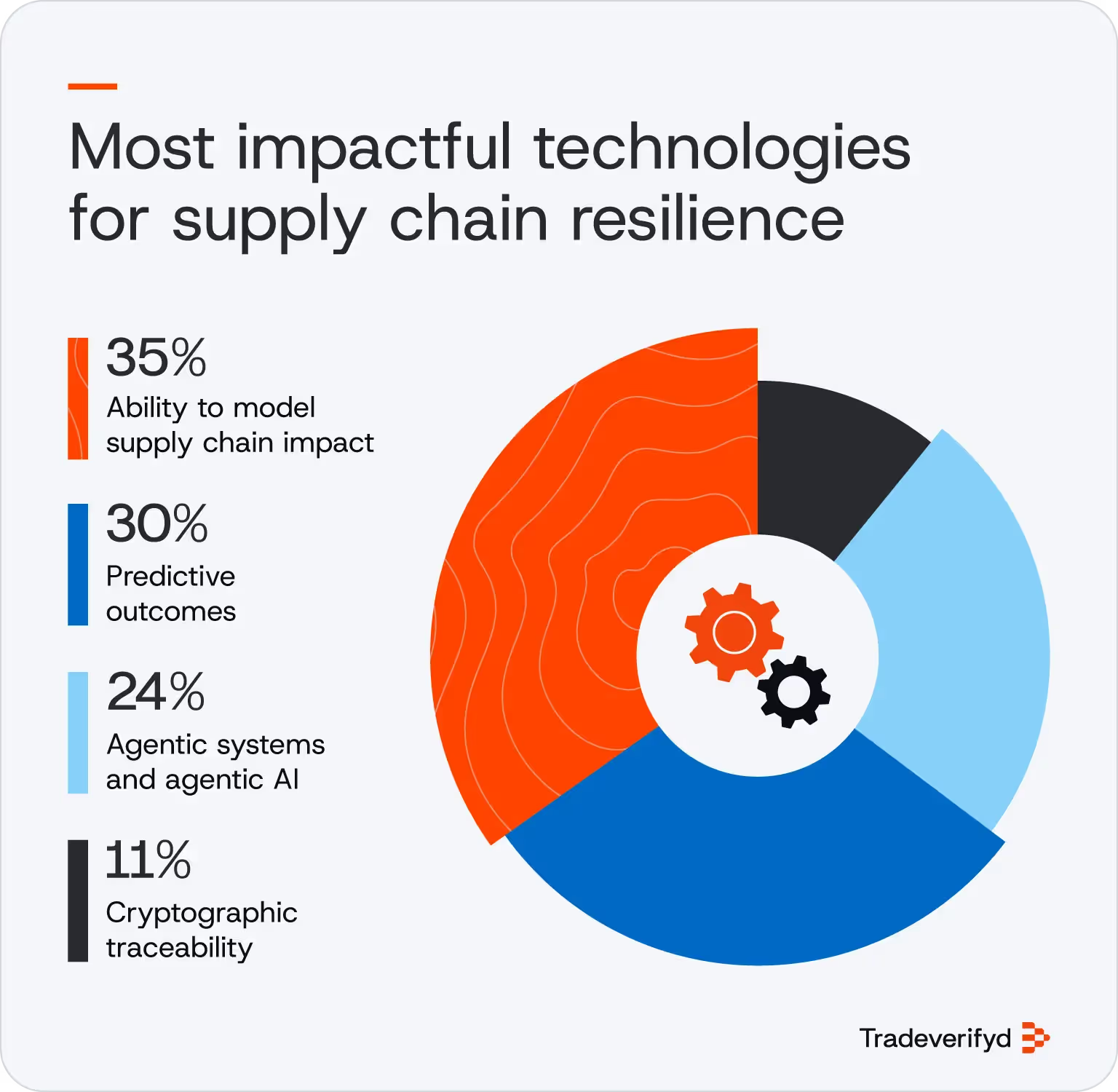
This represents a strategic evolution toward advanced risk management capabilities. Suppliers are seeking technology that can help them “see around corners” — specifically, tools that leverage artificial intelligence and machine learning to simulate potential disruptions and understand their cascading effects across complex supply networks.
This desire for advanced modeling capabilities, coupled with the continued demand for real-time visibility (identified by 60% as a critical software feature), paints a clear picture. Suppliers seek visibility tools that actively predict, analyze, and enable informed decision-making before disruptions occur.
43.5% Uncertain: The Blind Spot in Tier 2/3 Visibility
This challenge is further complicated by limited visibility deeper into the supply chain. Nearly 43.5% of automotive suppliers are only “moderately confident” in their Tier 2 and Tier 3 suppliers' ability to meet demand and quality expectations. This represents a significant blind spot in an industry where a single component failure can shut down entire production lines.
Additionally, a notable 14.4% of organizations still don't utilize dedicated predictive analytics tools for disruptions, highlighting a lingering gap in data-driven foresight. This means disruptions at lower, less visible supply tiers can have massive, unexpected ripple effects, turning small problems into major crises.
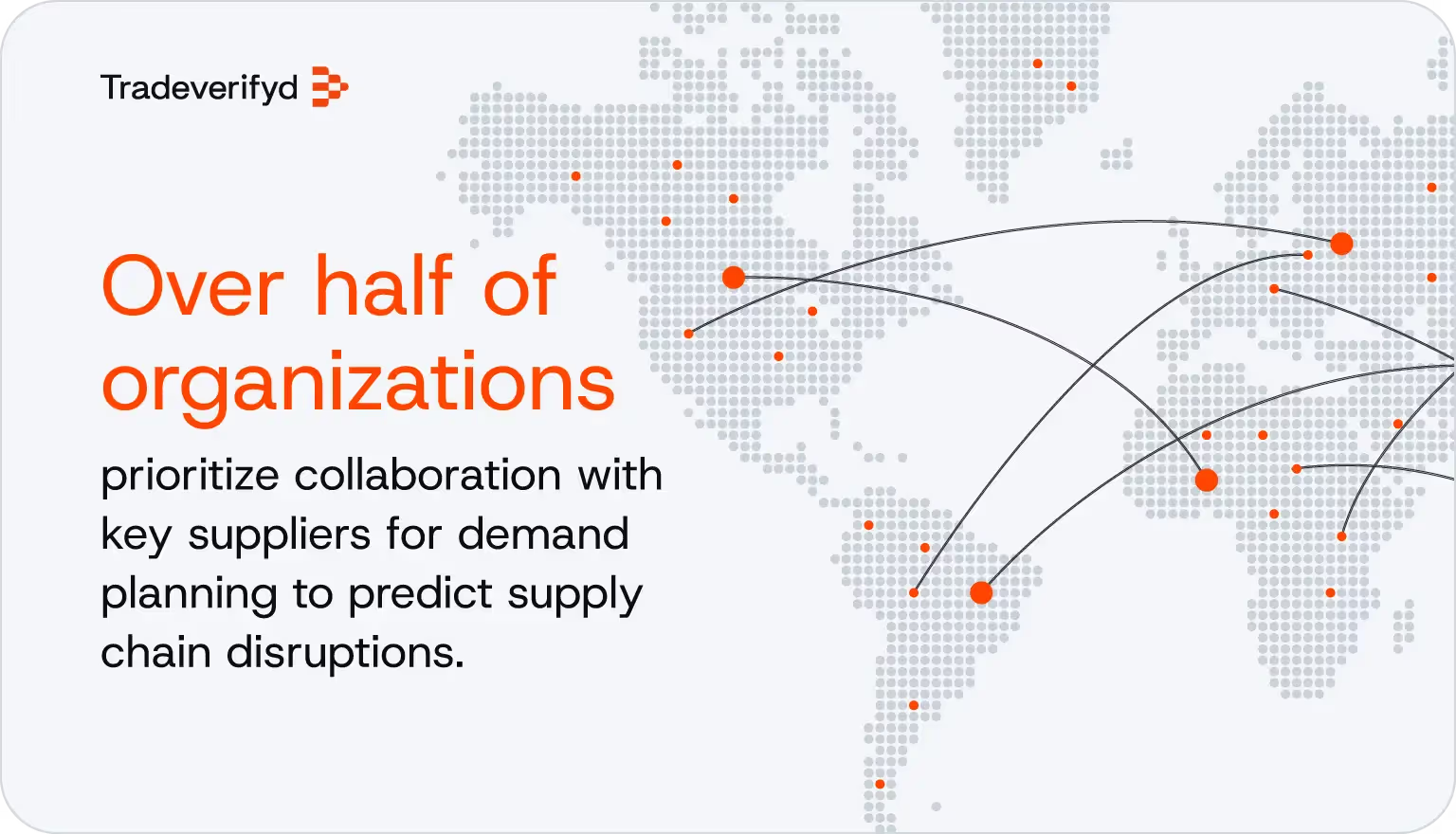
Bridging these gaps is where advanced solutions become essential. Platforms like Tradeverifyd offer the precise tools needed to gain clarity into these complex, multi-tier networks.
“Automotive companies lacking deep visibility into their sub-tier suppliers and the predictive tools to anticipate risk are effectively flying blind in a regulatory and geopolitical environment that demands clarity. It’s as much a national security and brand integrity risk as a compliance issue. Without foresight into where parts and materials originate, how they move, and who touches them, companies are vulnerable to expensive sourcing violations, reputational damage, and serious disruptions. The stakes are even higher now as regulatory scrutiny intensifies and enforcement expands. Actionable visibility is no longer an optional advantage; it’s competitive table stakes.”
— Karyl Fowler, Chief Policy Officer at Tradeverifyd
What These Results Mean for Automotive Leaders
The survey insights paint a clear picture: The automotive industry supply chain faces critical challenges, but also a strong drive for resilience and real-time visibility. Old, reactive approaches are no longer enough.
“In a global, multi-tier supply chain, uncertainty is constant. Disruptions can come from anywhere - geopolitical shifts, regulatory pressure, or gaps deep in your supplier network. The difference between reacting and leading comes down to visibility and technology. Automotive executives need tools that don’t just identify risks, but provide clarity, predict consequences, and support decisive action. The leaders who invest in that capability will be the ones who reduce exposure, protect operations, and provide real confidence to their organizations.”
— Mike Prorock, Founder & CEO of Tradeverifyd
For leaders, the path forward is clear. Prioritize true end-to-end visibility and embrace robust predictive tools. Tackle core barriers like a lack of standardization and invest in solutions that build smooth collaboration across multi-tier partners. This shift turns vulnerabilities into strategic strengths, moving companies from reacting to proactively managing risks.
Future-Proof Your Auto Supply Chain with Tradeverifyd
Success in automotive supply chain management depends on strong data and smart platforms that provide real-time information and close visibility gaps with your sub-tier suppliers. Tradeverifyd understands these challenges. We offer complete solutions to boost transparency, improve prediction accuracy, and make collaboration across your entire network easier.
Ready to build a resilient supply chain with unmatched end-to-end visibility and insight? Discover what Tradeverifyd can do for you.
Methodology
The survey was conducted by Centiment Audience for Tradeverifyd and fielded on June 4, 2025. Results are based on 322 completed surveys. To qualify, respondents had to be U.S. residents over the age of 18. All participants held roles or responsibilities related to supply chain or logistics within the automotive industry.
Resources & Insights
+
02



